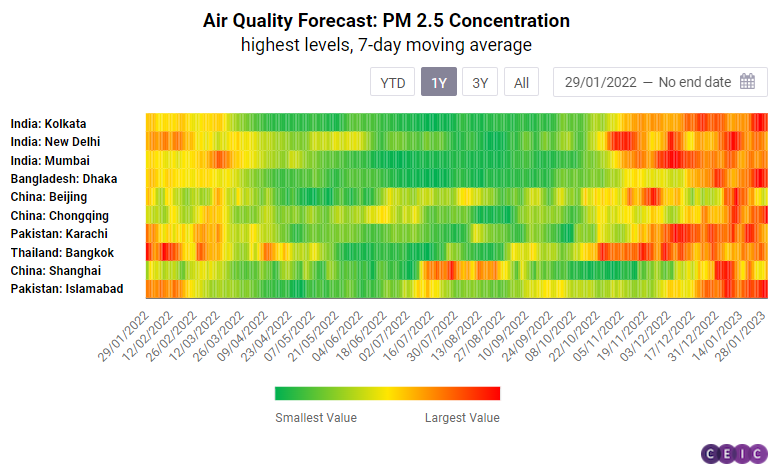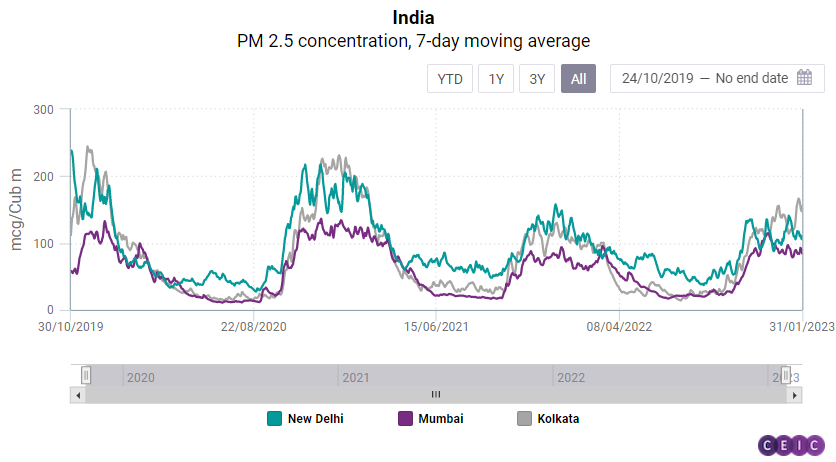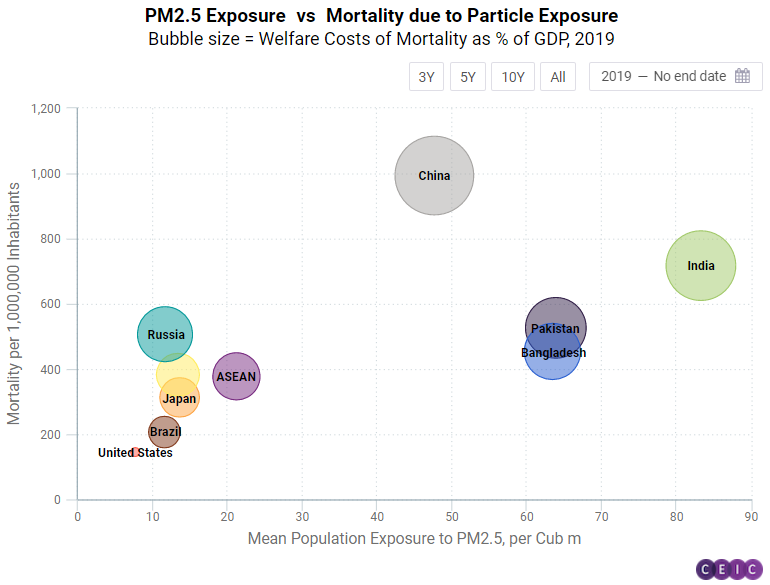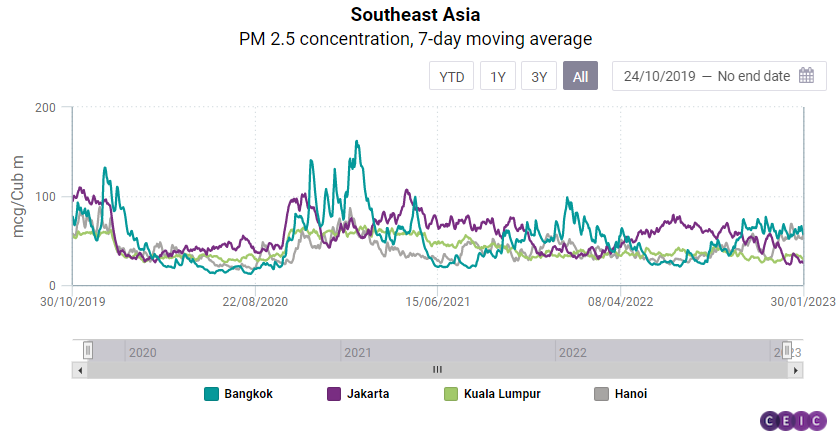
Elevated air contamination in major Asian cities has been observed in late December 2022 and early January 2023 using daily data from the Copernicus Atmosphere Monitoring Service (CAMS). The concentration of particles (PM2.5 and PM10) has been particularly high in India, where levels have exceeded 100mcg per cubic metre in Kolkata, Mumbai and New Delhi, three of the four of India's metro cities. Other cities in Asia among the worlds most polluted are Dhaka (Bangladesh), Islamabad and Karachi (Pakistan), Beijing, Shanghai and Chongqing (China) and Bangkok (Thailand). CAMS data for these cities also reveals high levels of other pollutants such as ozone and nitrogen dioxide.

CAMS provides daily satellite data for PM2.5, PM10, ozone and nitrogen dioxide, as well as short-term forecasts for the contamination levels for these pollutants. Asian cities are set to experience the highest levels of air pollution in two years in December 2022. According to the latest World Health Organization (WHO) guidelines, a mean level of 15mcg per cubic metre over 24 hours are considered unsafe. The thresholds for PM10, ozone and nitrogen dioxide have been set at 45, 60 and 25mcg per cubic metre, respectively. However, WHO guidelines are not mandatory for individual countries and many have their own air pollution standards which are usually more lenient than the WHOs. 
Air pollution is associated with a range of negative impacts on human health, such as respiratory and cardiovascular problems, and cancer. These health issues can lead to increased demand for medical care and higher healthcare costs for individuals and for the overall healthcare system. According to 2019 World Bank data, the out-of-pocket health expenditures in India were as high as 54.8% of the current health health-related spending. By contrast, in the Euro Area and the US, this share is 15.3% and 11.3%, respectively. In terms of total healthcare spending as a share of GDP, the pattern is the opposite: big emerging economies in Asia have significantly lower levels of health-related expenditure as a share of GDP compared to their developed counterparts, who experience less air pollution. However, this doesn't mean the US or the Euro Area have tackled air pollution via more spending, but rather a point to increased healthcare spending, including prevention and treatments in general.

In addition, air pollution can lead to reduced productivity and absenteeism and presenteeism. Bad air quality can also contribute to increased regulatory costs for businesses, as governments may implement stricter regulations to reduce air pollution. This can increase the cost of doing business, which can in turn affect a country's competitiveness and economic growth. For example, businesses may be required to install pollution control equipment or switch to cleaner production processes, which can increase their operating costs. Among other factors, these increased costs can affect a company's profitability and competitiveness, and may also be passed on to consumers in the form of higher prices for goods and services.

In the World Bank's Doing Business ranking in 2019, some ASEAN members like Malaysia and Thailand ranked significantly higher (at places 12 and 21 respectively) than other Asian economies and closed to developed markets. The US and the UK ranked 6th and 8th in terms of most business-friendly regulations. By contrast, China and India stood at places 32 and 62. If the increased air pollution in Asia persists and indeed leads, governments might be prompted to expand existing regulations, resulting in deterioration of the business environment.
.png?width=160&name=ceic-logo-Vector%20logo%20no%20tagline%20(002).png)
